What Is the Google Knowledge Graph & How it Works
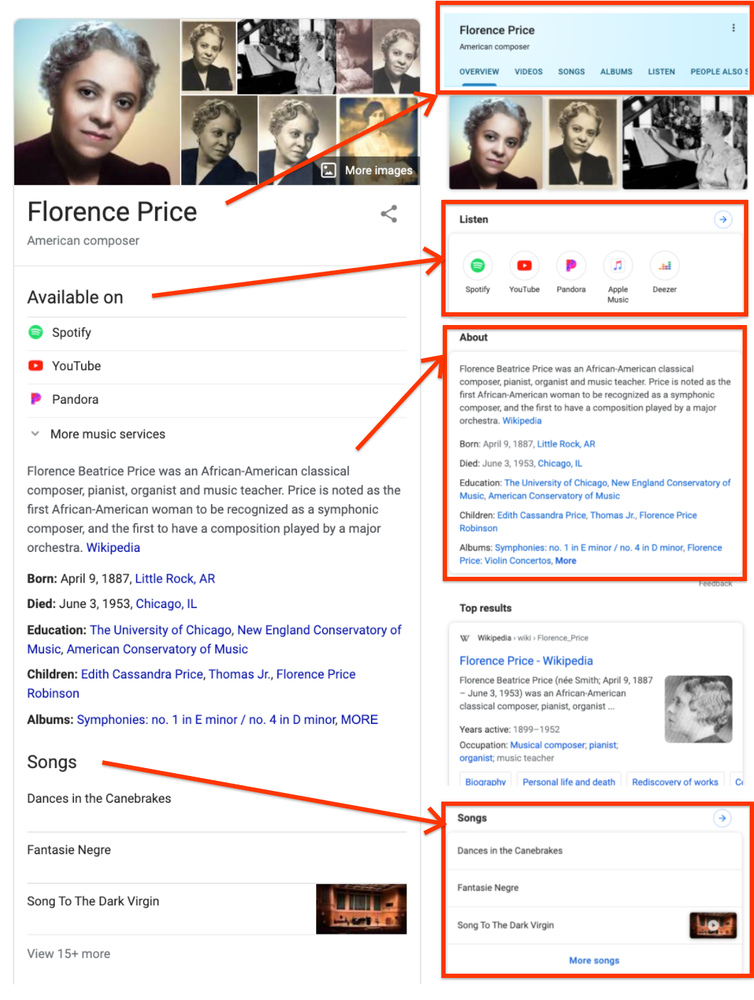
Google’s Knowledge Graph is like a “giant virtual encyclopedia of facts” that Google references to generate certain elements of search results.
The virtual encyclopedia, as Google puts it, has grown to be quite large.
But what goes into creating the knowledge panels Google shows in its search results?
In this post, you’ll learn the basics of Google’s Knowledge Graph and how Google generates knowledge panels.
What Is the Google Knowledge Graph
Google’s Knowledge Graph is now comprised of over 500 billion facts about 5 billion entities, according to Google’s Search Liaison, Danny Sullivan.
Google’s Knowledge Graph has amassed over 500 billion facts about five billion entities — people, places and things. This post explains how the Knowledge Graph works, presents information in knowledge panels & how we work to improve it. https://t.co/fSWYTl6i4B pic.twitter.com/ZR4CR8BzTJ
— Google SearchLiaison (@searchliaison) May 20, 2020
Google’s Knowledge Graph is responsible for generating the boxes shown in search results for queries about people, places, and things.
Those boxes, called knowledge panels, present a list of key facts pulled from the Knowledge Graph.
According to Google:
“They’re designed to help you quickly understand more about a particular subject by surfacing key facts and to make it easier to explore a topic in more depth.”
How Google Generates Knowledge Panels
Knowledge panels are automatically generated, which Google points out in case anyone thinks there’s someone updating these things manually.
Google’s automated systems aim to show the most relevant and popular information for an entity in a knowledge panel.
What’s shown in a knowledge panel will vary from one entity to another, but generally Google will include:
- Title and short summary of the topic
- A longer description of the subject
- A picture or pictures of the person, place or thing
- Key facts, such as when a notable figure was born or where something is located
- Links to social profiles and official websites
A knowledge panel may also include more specialized information depending on the type of entity being searched for.
For example, certain types of knowledge panels may include:
- Songs from musical artists
- Upcoming episodes from TV shows
- Rosters of sports teams
Where Does the Information Come From?
Google’s Knowledge Graph, introduced in 2012, gets its information from web content as well as licensed databases.
Wikipedia is one of the most commonly cited sources, but it’s not the only source.
According to Sullivan:
“We draw from hundreds of sources from across the web, including licensing data that appears in knowledge panels for music, sports and TV.
We work with medical providers to create carefully vetted content for knowledge panels for health issues.
We also draw from special coding that content owners can use, such as to indicate upcoming events.”
Multiple Knowledge Panels on Mobile
Since Knowledge Panels were first launched, search behavior has shifted to the point where most activity now occurs on mobile.
Knowledge Panels were originally designed for desktop search, and initially weren’t very compatible with mobile screens.
Mobile screen size doesn’t allow for a side-by-side display in the same way desktop does.
To work around this, Google presents multiple knowledge panels in mobile search which are spread throughout the SERPs.
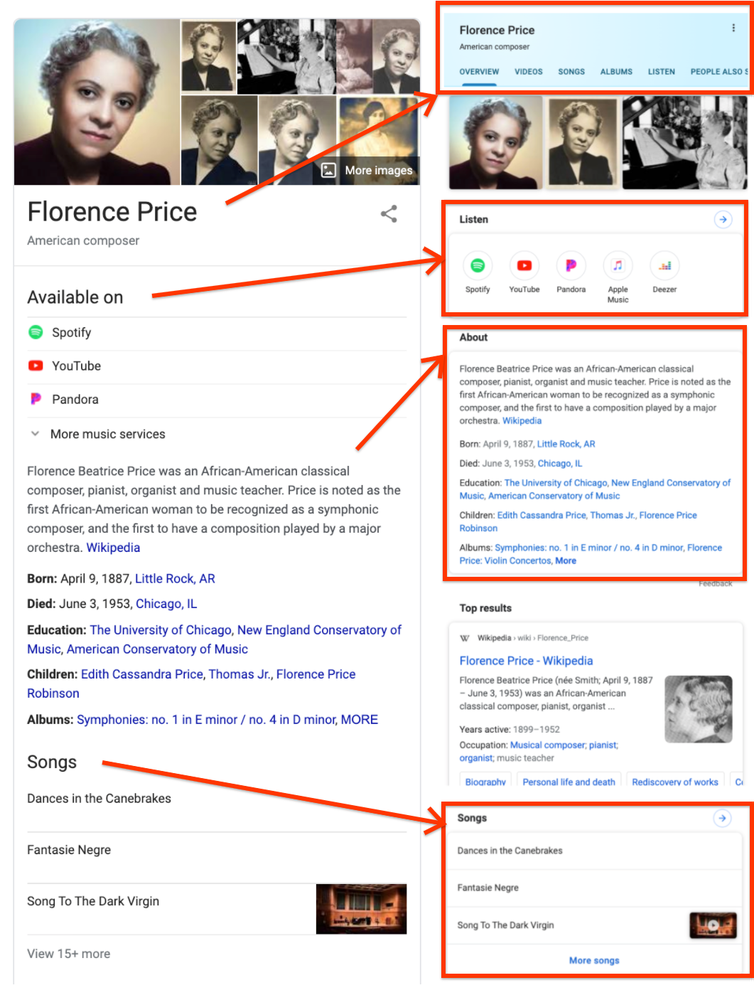
Changing a Knowledge Panel
Sullivan admits that inaccuracies in the Knowledge Graph can happen, which leads to the wrong information being displayed in search results.
If you spot an inaccuracy you can notify Google by selecting the “Feedback” option.
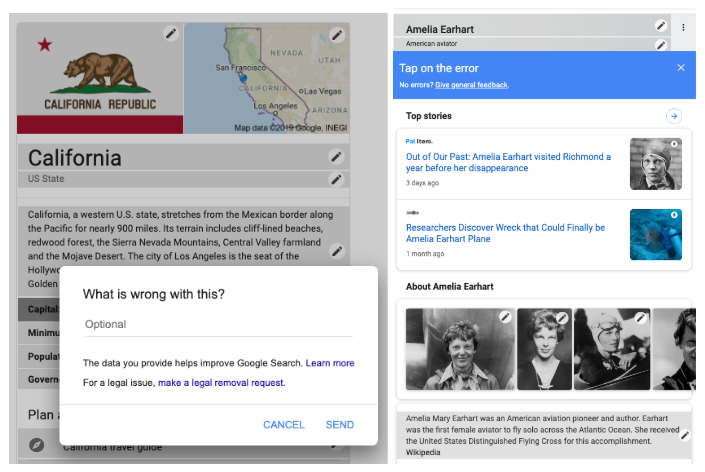
Google uses this feedback to improve the Knowledge Graph by analyzing it to understand how the inaccuracies weren’t automatically detected.
Further, Google will remove inaccurate facts that are brought to its attention, especially when they relate to public interest topics.
Those who have “claimed” their own knowledge panel, such as a person or company, can communicate changes directly to Google at any time.
How to Get in Google’s Knowledge Graph
There is no exact way to get content in Google’s Knowledge Graph, but there are various optimization methods that can improve a site’s chances of being included in it.
Here are different ways you can optimize content for Google’s Knowledge Graph:
- Use structured data markup
- Create a Google My Business profile
- Get listed on Wikidata.org and Wikipedia
- Build more links
- Create social media profiles
- Create listings in relevant directories
- Promote your content and share it widely
Utilize the above tactics in conjunction with traditional SEO to maximize the chances of getting your content in Google’s Knowledge Graph.
Does Google’s Knowledge Graph Help SEO?
Yes, the Knowledge Graph does help SEO as it improves Google’s understanding of what a page is about and which queries it’s relevant for.
The more context Google has about a page the more efficiently it can rank said page.
Another way Google’s Knowledge Graph helps with SEO is by making content discoverable across more surfaces.
Google is more capable of returning the content for natural languages queries, such as voice searches, as it can recognize individual attributes and entities.
Knowledge Graph content may be displayed more prominently in search results as it’s eligible for Knowledge Panels and rich results.
How to Request Edits to Knowledge Graph
Knowledge Panels are automatically generated but, if Google gets it wrong, site owners can request edits using the “request an edit” button.
Request an edit to Google’s Knowledge Graph by following the steps below:
- Go to Google Search.
- Sign in to the Google account associated with the entity that you represent.
- Search for your entity on Google and find its knowledge panel. Ensure you see your entity’s title at the top of the knowledge panel.
- At the top of the knowledge panel, click Suggest an edit (or Suggest edits on mobile).
- Click the information that you want to change. If you have multiple suggestions, submit feedback for each item separately.
- In the response box that opens, write a short description that includes the following:
- Clearly state your suggested change.
- Explain why you believe your suggestion should replace the existing content.
- If applicable, include any publicly accessible URLs that confirm your suggested changes.
- Click Send.
More Resources
For information about Google’s Knowledge Graph and knowledge panels, see the resources below:
AI
Exploring the Evolution of Language Translation: A Comparative Analysis of AI Chatbots and Google Translate
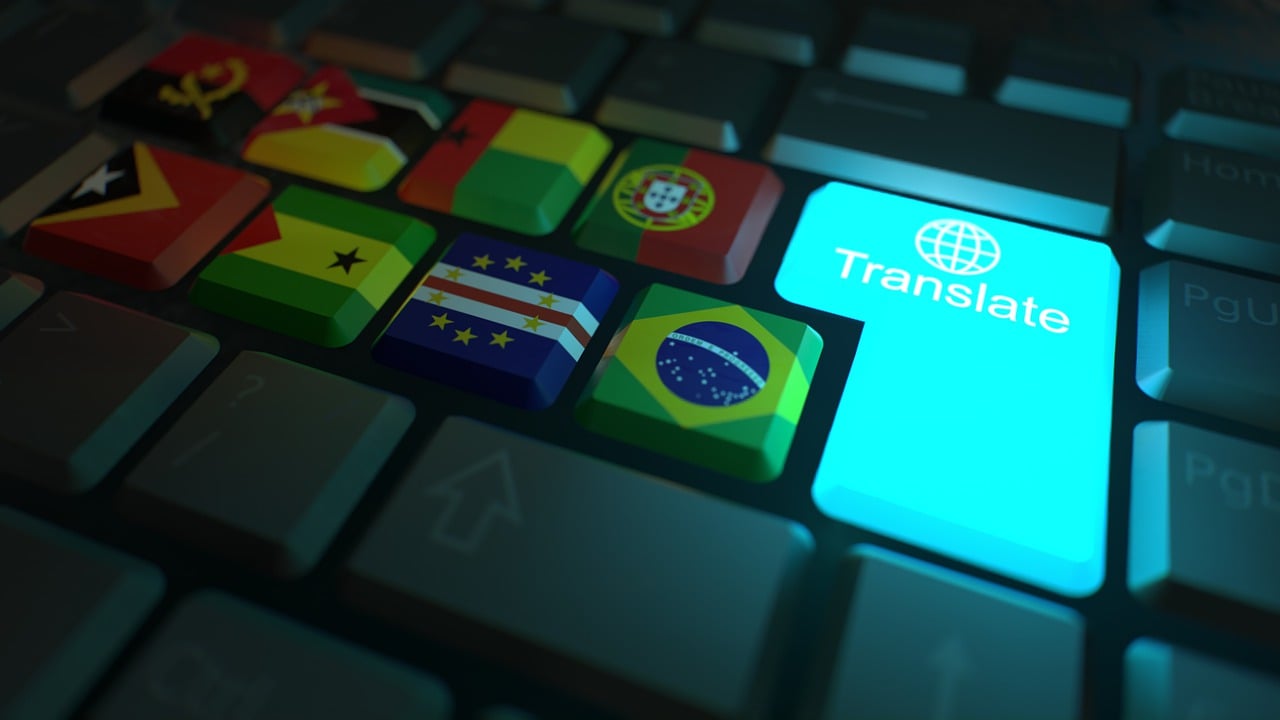
According to an article on PCMag, while Google Translate makes translating sentences into over 100 languages easy, regular users acknowledge that there’s still room for improvement.
In theory, large language models (LLMs) such as ChatGPT are expected to bring about a new era in language translation. These models consume vast amounts of text-based training data and real-time feedback from users worldwide, enabling them to quickly learn to generate coherent, human-like sentences in a wide range of languages.
However, despite the anticipation that ChatGPT would revolutionize translation, previous experiences have shown that such expectations are often inaccurate, posing challenges for translation accuracy. To put these claims to the test, PCMag conducted a blind test, asking fluent speakers of eight non-English languages to evaluate the translation results from various AI services.
The test compared ChatGPT (both the free and paid versions) to Google Translate, as well as to other competing chatbots such as Microsoft Copilot and Google Gemini. The evaluation involved comparing the translation quality for two test paragraphs across different languages, including Polish, French, Korean, Spanish, Arabic, Tagalog, and Amharic.
In the first test conducted in June 2023, participants consistently favored AI chatbots over Google Translate. ChatGPT, Google Bard (now Gemini), and Microsoft Bing outperformed Google Translate, with ChatGPT receiving the highest praise. ChatGPT demonstrated superior performance in converting colloquialisms, while Google Translate often provided literal translations that lacked cultural nuance.
For instance, ChatGPT accurately translated colloquial expressions like “blow off steam,” whereas Google Translate produced more literal translations that failed to resonate across cultures. Participants appreciated ChatGPT’s ability to maintain consistent levels of formality and its consideration of gender options in translations.
The success of AI chatbots like ChatGPT can be attributed to reinforcement learning with human feedback (RLHF), which allows these models to learn from human preferences and produce culturally appropriate translations, particularly for non-native speakers. However, it’s essential to note that while AI chatbots outperformed Google Translate, they still had limitations and occasional inaccuracies.
In a subsequent test, PCMag evaluated different versions of ChatGPT, including the free and paid versions, as well as language-specific AI agents from OpenAI’s GPTStore. The paid version of ChatGPT, known as ChatGPT Plus, consistently delivered the best translations across various languages. However, Google Translate also showed improvement, performing surprisingly well compared to previous tests.
Overall, while ChatGPT Plus emerged as the preferred choice for translation, Google Translate demonstrated notable improvement, challenging the notion that AI chatbots are always superior to traditional translation tools.
Source: https://www.pcmag.com/articles/google-translate-vs-chatgpt-which-is-the-best-language-translator
Google Implements Stricter Guidelines for Mass Email Senders to Gmail Users
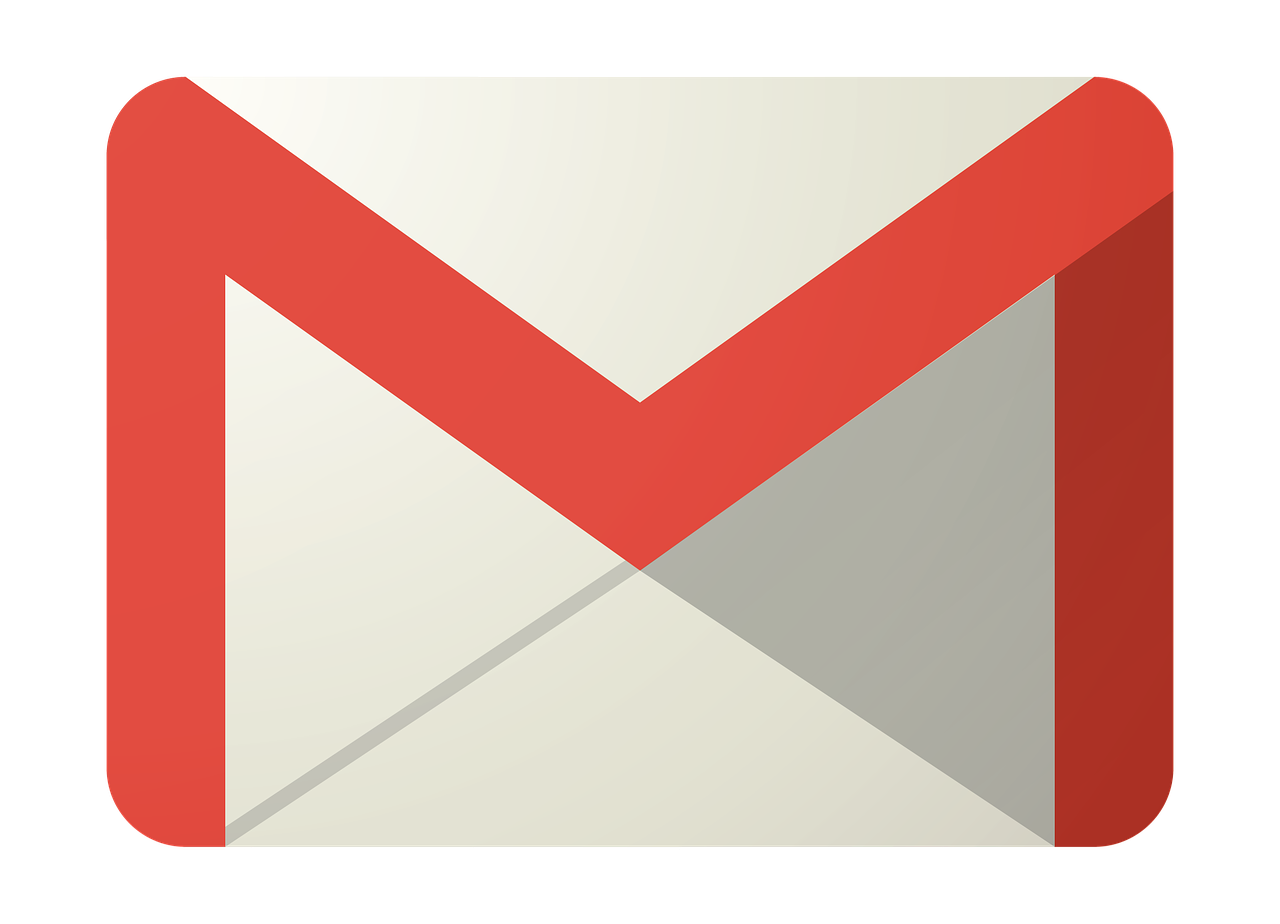
Beginning in April, Gmail senders bombarding users with unwanted mass emails will encounter a surge in message rejections unless they comply with the freshly minted Gmail email sender protocols, Google cautions.
Fresh Guidelines for Dispatching Mass Emails to Gmail Inboxes In an elucidative piece featured on Forbes, it was highlighted that novel regulations are being ushered in to shield Gmail users from the deluge of unsolicited mass emails. Initially, there were reports surfacing about certain marketers receiving error notifications pertaining to messages dispatched to Gmail accounts. Nonetheless, a Google representative clarified that these specific errors, denoted as 550-5.7.56, weren’t novel but rather stemmed from existing authentication prerequisites.
Moreover, Google has verified that commencing from April, they will initiate “the rejection of a portion of non-compliant email traffic, progressively escalating the rejection rate over time.” Google elaborates that, for instance, if 75% of the traffic adheres to the new email sender authentication criteria, then a portion of the remaining non-conforming 25% will face rejection. The exact proportion remains undisclosed. Google does assert that the implementation of the new regulations will be executed in a “step-by-step fashion.”
This cautious and methodical strategy seems to have already kicked off, with transient errors affecting a “fraction of their non-compliant email traffic” coming into play this month. Additionally, Google stipulates that bulk senders will be granted until June 1 to integrate “one-click unsubscribe” in all commercial or promotional correspondence.
Exclusively Personal Gmail Accounts Subject to Rejection These alterations exclusively affect bulk emails dispatched to personal Gmail accounts. Entities sending out mass emails, specifically those transmitting a minimum of 5,000 messages daily to Gmail accounts, will be mandated to authenticate outgoing emails and “refrain from dispatching unsolicited emails.” The 5,000 message threshold is tabulated based on emails transmitted from the same principal domain, irrespective of the employment of subdomains. Once the threshold is met, the domain is categorized as a permanent bulk sender.
These guidelines do not extend to communications directed at Google Workspace accounts, although all senders, including those utilizing Google Workspace, are required to adhere to the updated criteria.
Augmented Security and Enhanced Oversight for Gmail Users A Google spokesperson emphasized that these requisites are being rolled out to “fortify sender-side security and augment user control over inbox contents even further.” For the recipient, this translates to heightened trust in the authenticity of the email sender, thus mitigating the risk of falling prey to phishing attempts, a tactic frequently exploited by malevolent entities capitalizing on authentication vulnerabilities. “If anything,” the spokesperson concludes, “meeting these stipulations should facilitate senders in reaching their intended recipients more efficiently, with reduced risks of spoofing and hijacking by malicious actors.”
Google’s Next-Gen AI Chatbot, Gemini, Faces Delays: What to Expect When It Finally Launches
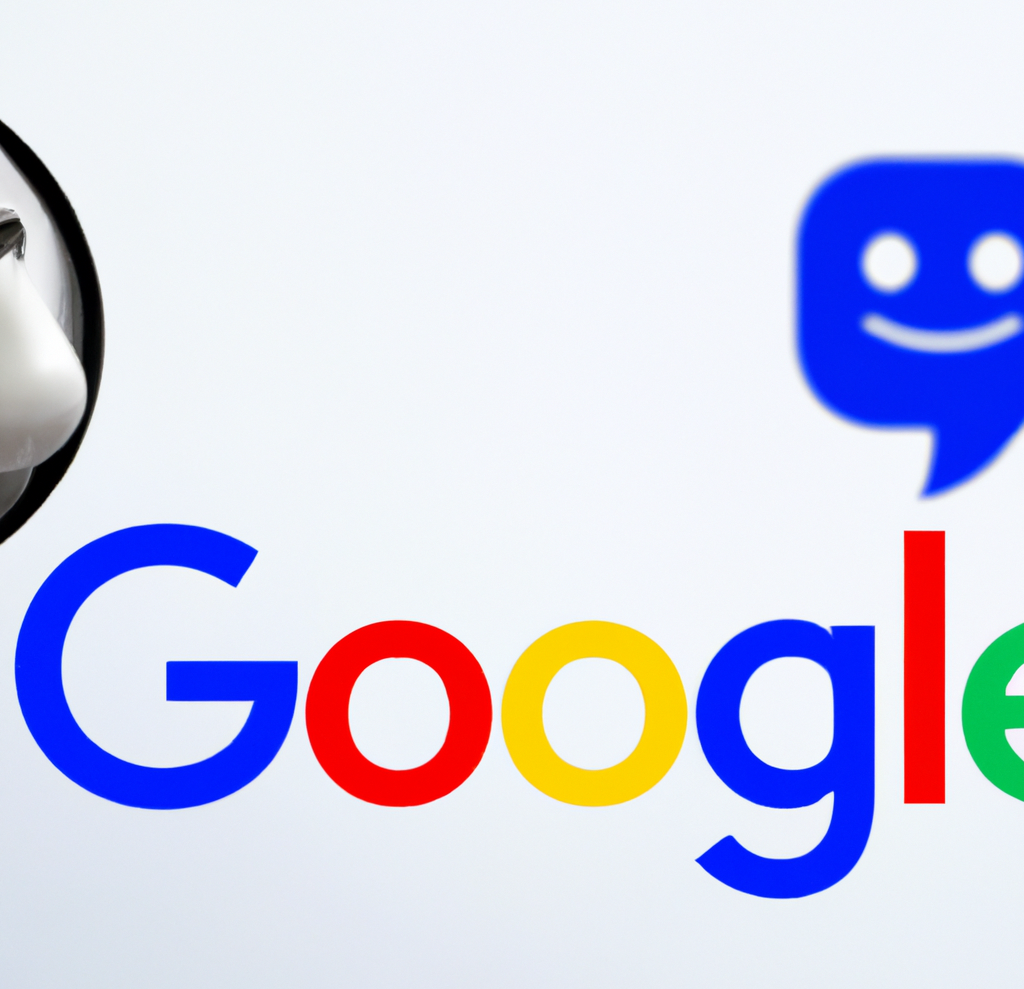
In an unexpected turn of events, Google has chosen to postpone the much-anticipated debut of its revolutionary generative AI model, Gemini. Initially poised to make waves this week, the unveiling has now been rescheduled for early next year, specifically in January.
Gemini is set to redefine the landscape of conversational AI, representing Google’s most potent endeavor in this domain to date. Positioned as a multimodal AI chatbot, Gemini boasts the capability to process diverse data types. This includes a unique proficiency in comprehending and generating text, images, and various content formats, even going so far as to create an entire website based on a combination of sketches and written descriptions.
Originally, Google had planned an elaborate series of launch events spanning California, New York, and Washington. Regrettably, these events have been canceled due to concerns about Gemini’s responsiveness to non-English prompts. According to anonymous sources cited by The Information, Google’s Chief Executive, Sundar Pichai, personally decided to postpone the launch, acknowledging the importance of global support as a key feature of Gemini’s capabilities.
Gemini is expected to surpass the renowned ChatGPT, powered by OpenAI’s GPT-4 model, and preliminary private tests have shown promising results. Fueled by significantly enhanced computing power, Gemini has outperformed GPT-4, particularly in FLOPS (Floating Point Operations Per Second), owing to its access to a multitude of high-end AI accelerators through the Google Cloud platform.
SemiAnalysis, a research firm affiliated with Substack Inc., expressed in an August blog post that Gemini appears poised to “blow OpenAI’s model out of the water.” The extensive compute power at Google’s disposal has evidently contributed to Gemini’s superior performance.
Google’s Vice President and Manager of Bard and Google Assistant, Sissie Hsiao, offered insights into Gemini’s capabilities, citing examples like generating novel images in response to specific requests, such as illustrating the steps to ice a three-layer cake.
While Google’s current generative AI offering, Bard, has showcased noteworthy accomplishments, it has struggled to achieve the same level of consumer awareness as ChatGPT. Gemini, with its unparalleled capabilities, is expected to be a game-changer, demonstrating impressive multimodal functionalities never seen before.
During the initial announcement at Google’s I/O developer conference in May, the company emphasized Gemini’s multimodal prowess and its developer-friendly nature. An application programming interface (API) is under development, allowing developers to seamlessly integrate Gemini into third-party applications.
As the world awaits the delayed unveiling of Gemini, the stakes are high, with Google aiming to revolutionize the AI landscape and solidify its position as a leader in generative artificial intelligence. The postponed launch only adds to the anticipation surrounding Gemini’s eventual debut in the coming year.
-

 SEO7 days ago
SEO7 days agoGoogle Limits News Links In California Over Proposed ‘Link Tax’ Law
-

 SEARCHENGINES6 days ago
SEARCHENGINES6 days agoGoogle Core Update Volatility, Helpful Content Update Gone, Dangerous Google Search Results & Google Ads Confusion
-

 SEO6 days ago
SEO6 days ago10 Paid Search & PPC Planning Best Practices
-

 MARKETING6 days ago
MARKETING6 days ago2 Ways to Take Back the Power in Your Business: Part 2
-

 MARKETING5 days ago
MARKETING5 days ago5 Psychological Tactics to Write Better Emails
-

 SEARCHENGINES5 days ago
SEARCHENGINES5 days agoWeekend Google Core Ranking Volatility
-

 PPC7 days ago
PPC7 days agoCritical Display Error in Brand Safety Metrics On Twitter/X Corrected
-

 MARKETING6 days ago
MARKETING6 days agoThe power of program management in martech













